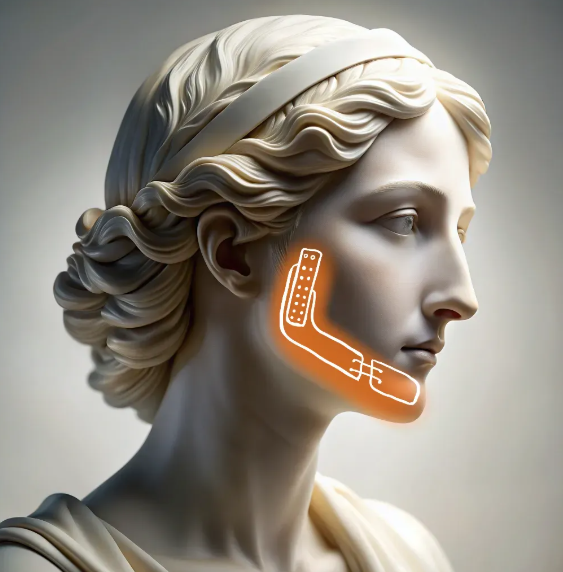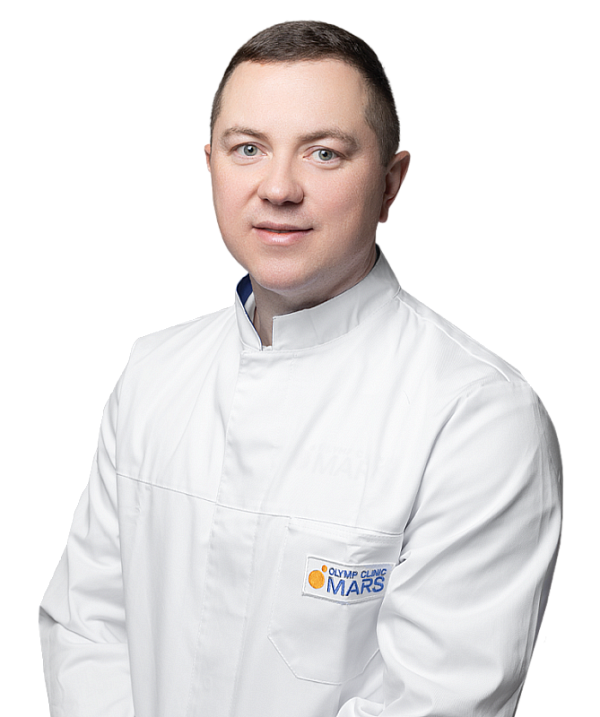Naso-orbital reduction and osteosynthesis
Facial skeleton restoration surgery involving nose and eye socket fractures.

Naso-orbital fractures involve damage to multiple anatomical structures, including nasal bones, eye sockets, and the cheekbones. Such fractures result from significant impacts, such as car accidents, falls from great heights, or blows during sports. A minor displacement of the fragments can result in impaired vision and facial expressions.
Patients sustaining such injuries typically experience functional impairments in addition to significant cosmetic defects, including eyeball drooping and facial asymmetry. Reduction and osteosynthesis help restore the anatomical form and function of the facial skeleton. The procedure involves precisely aligning and securing the fragments using titanium plates.
Prior to the procedure, the patient will undergo a CT or X-ray scan of the head, as well as a thorough medical examination. This will include general and biochemical blood tests, a coagulogram, infection tests, urinalysis, an ECG, and fluorography. The patient is also required to consult with an ophthalmologist, otolaryngologist, general practitioner, and anesthesiologist.
The surgery is performed under general anesthesia. The surgeon will then reposition the bone fragments and fix them with miniplates and screws, either through external or intraoral access. In cases where the walls of the eye socket are damaged and cannot be accurately repositioned, bone transplantation using an autograft (from the patient's own parietal or iliac bone, for example) is a treatment option. All stages of the intervention are performed under visual control to ensure accurate anatomical reconstruction. Depending on the extent of the surgery, the patient typically remains in the hospital for 5-7 days.
We use advanced surgical and endoscopic equipment, titanium miniplates and screws.
The patient remains under observation in the hospital after the surgery. In the first few days there may be swelling and slight soreness, which are managed with medication. The patient is advised to keep bed rest, limit facial expressions and chewing loads. During 4-6 weeks it is necessary to avoid physical activity, overheating, hypothermia and sunlight exposure. Complete healing usually takes 1.5-2 months.
Benefits
Anatomic precision
Helps restore natural facial contours and avoid complications.
Functional restoration
Eliminates visual, breathing and facial muscle dysfunction.
Minimal trauma
Microincisions and endoscopic techniques reduce the risk of complications.
Individual planning
Preoperative imaging increases the accuracy of the intervention.
Врачи
Смотреть всех врачейMaxillofacial surgeon. Candidate of Medical Sciences.
Similar referral activities
Post-traumatic facial deformities treatment
Surgical restoration of facial bones and soft tissues after trauma to restore function and appearance.
Maxillofacial purulent inflammations diagnostics and dissection
Surgical treatment of abscesses, phlegmons, and other acute inflammations with drainage and sanitation.
Cheekbone reduction and osteosynthesis
Surgical restoration of the zygomatic bone using titanium plates to fix the fragments.
Lower jaw osteosynthesis
A surgical procedure designed to repair broken bones in cases of mandibular fractures.
Intermaxillary fixation with screws
Temporary jaw stabilization in fractures and postoperative care.

